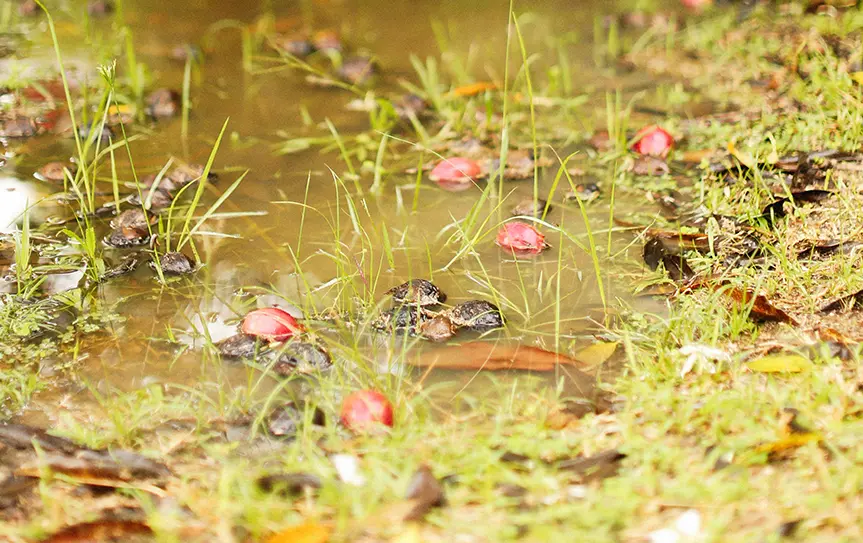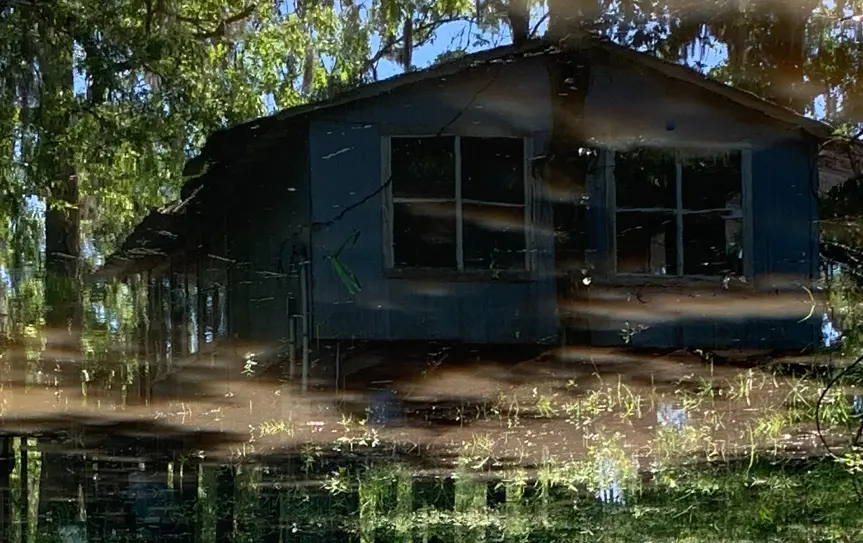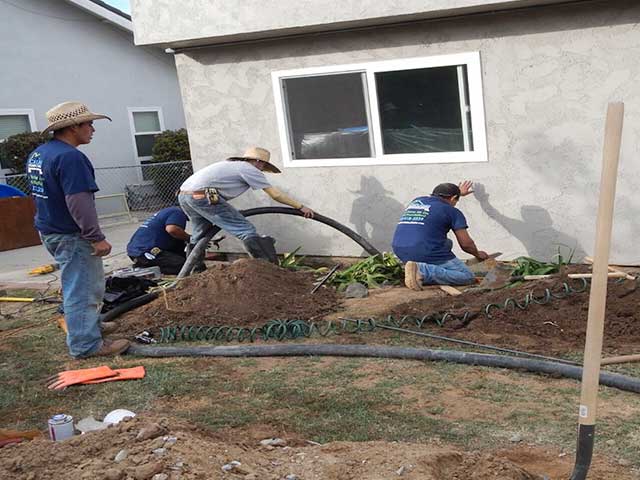Written by California Foundation Works staff on January 29th, 2024
Excess water from your neighbor’s yard can become a real headache for any homeowner. Not only does it turn your pristine landscape into a soggy mess, but it also poses serious threats to your property’s foundation and overall health. Stagnant water near your home can lead to mold and mildew growth, wood rot, and even cracked foundations – a costly and unpleasant situation.
Before we delve into the legal intricacies of drainage responsibility, Here are some practical solutions you can implement to divert unwanted runoff and safeguard your property:
1. Install a french drain
2. Create a catch basin
3. Build a berm
Don’t worry, we will dive deeper into these solutions in this article. Let’s first explore the legal responsibilities involved in addressing the issue.
Related: Home Drainage Solutions
In most cases, homeowners in Los Angeles are held solely responsible for water runoff onto their property, regardless of its source.
This legal concept, known as the common enemy rule, designates surface water as a shared challenge among landowners. Thus, if water collects on your property, even if originating from your neighbor’s yard, the responsibility falls on you.
Exceptions under Civil Law Rule
However, the civil law rule introduces exceptions. If your neighbor alters the natural water flow on their land, resulting in harm to your property, they may be held liable. Changes such as new landscaping or structures impacting water flow could make your neighbor responsible for damages to your property.

Practical Solutions for Los Angeles Homeowners
1. Constructing a Berm
Building a raised soil barrier, or berm, is a highly effective way to prevent water from reaching your home. Berms not only add aesthetic value but can also enhance property value. When building a berm, carefully plan its placement, considering areas with standing water after heavy rain. Starting small and expanding as needed is recommended to avoid water diversion issues.
2. Installing a French Drain System
A French drain is a surface-level trench that channels water away from undesirable locations. Despite sounding complex, these drainage systems are relatively simple. Installing a French drain involves creating a trench, planning for downhill slopes, and using landscape fabric, crushed stone, and gravel. While effective, remember that French drains typically have a lifespan of around five years.
Strategic Planning for French Drain Installation
Installing a French drain involves a balance of simplicity and time commitment, depending on the scale of your drainage issue. To effectively plan your project, locate a downhill slope in proximity to where water accumulates. If such a slope is absent, gradually deepen your trench to create one as you proceed. Aim for a drop of approximately 1 foot for every hundred feet in length, although perfection is not essential. The key is to prevent any areas along your route where water might collect and pool.
Pipeline Implementation
After excavating your trench, take measures to safeguard its efficiency. Line the interior with landscape fabric, then fill it with crushed stone or gravel. This not only provides a stable foundation for the perforated pipe but also prevents clogs from dirt and debris. Proceed by laying your pipe, covering it with additional gravel, and backfilling the drain with soil. It’s important to note that, despite their effectiveness as drainage solutions, French drains typically have a lifespan of around five years before requiring replacement.
3. Creating a Catch Basin
For large volumes of water dumped in specific locations, a catch basin is a suitable solution. Unlike French drains, catch basins are designed to handle large flooded areas. Find the location on your property where water accumulates, create a straight course away from your home, and ensure proper drainage.
In many cases, a catch basin with dimensions of 2 feet by 2 feet (60 centimeters by 60 centimeters) and a 6-inch (15-centimeter) drain proves more than sufficient. Identify the specific area on your property where water tends to accumulate. Similar to the approach taken with a French drain system, plan a direct course that moves away from your home. Ensure this course has a descending slope. If your yard lacks a natural incline, you’ll need to create one during the excavation process. After digging, lay a layer of gravel in both the basin hole and the trench.
Once the hole and trench are ready, securely connect your basin to the outlet pipe, ensuring a tight and secure fit for all connections. Subsequently, lower the basin and outlet pipe into the ground, ensuring that the basin’s height aligns levelly with the surrounding ground. While the installation of catch basins may demand time and effort for proper execution, they present an excellent solution to address water drainage issues effectively.
Related: Waterproofing Solutions

Dealing with Neighbor's Water Runoff
Even if your neighbor isn’t at fault, having their water runoff into your yard can be challenging. It’s essential to explore affordable and simple drainage options.
If the situation causes significant damage, consider consulting a professional for assessment and solutions. Remember, you’re not alone in facing these challenges, and practical solutions are available.
Related: Home Rot Repair
Why Choose California Foundation Works as a Drainage Contractor?
If you are a Los Angeles homeowner who is concerned about water runoff, your yard drainage system or the structural safety of your home, then California Foundation Works is the company for you. Our team of experts has years of pooled experience that we bring to every project. We are proud to be your one–stop shop for all Los Angeles construction needs. From yard drainage systems to soil grading to home repairs and renovations, feel free to call us today if you are considering making any changes to your home or property.
Are you struggling from water runoff from your neighbor?
Do you want to find adequate drainage solutions for your property?

